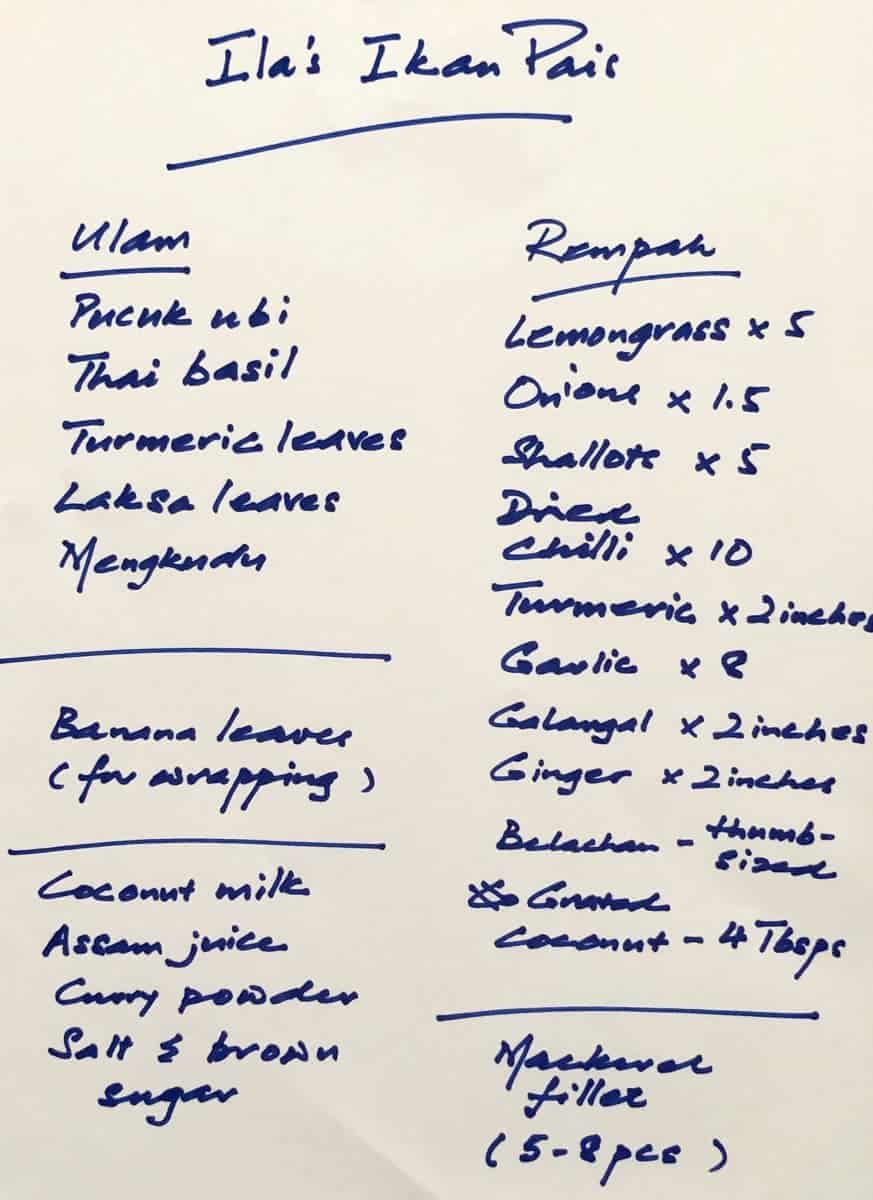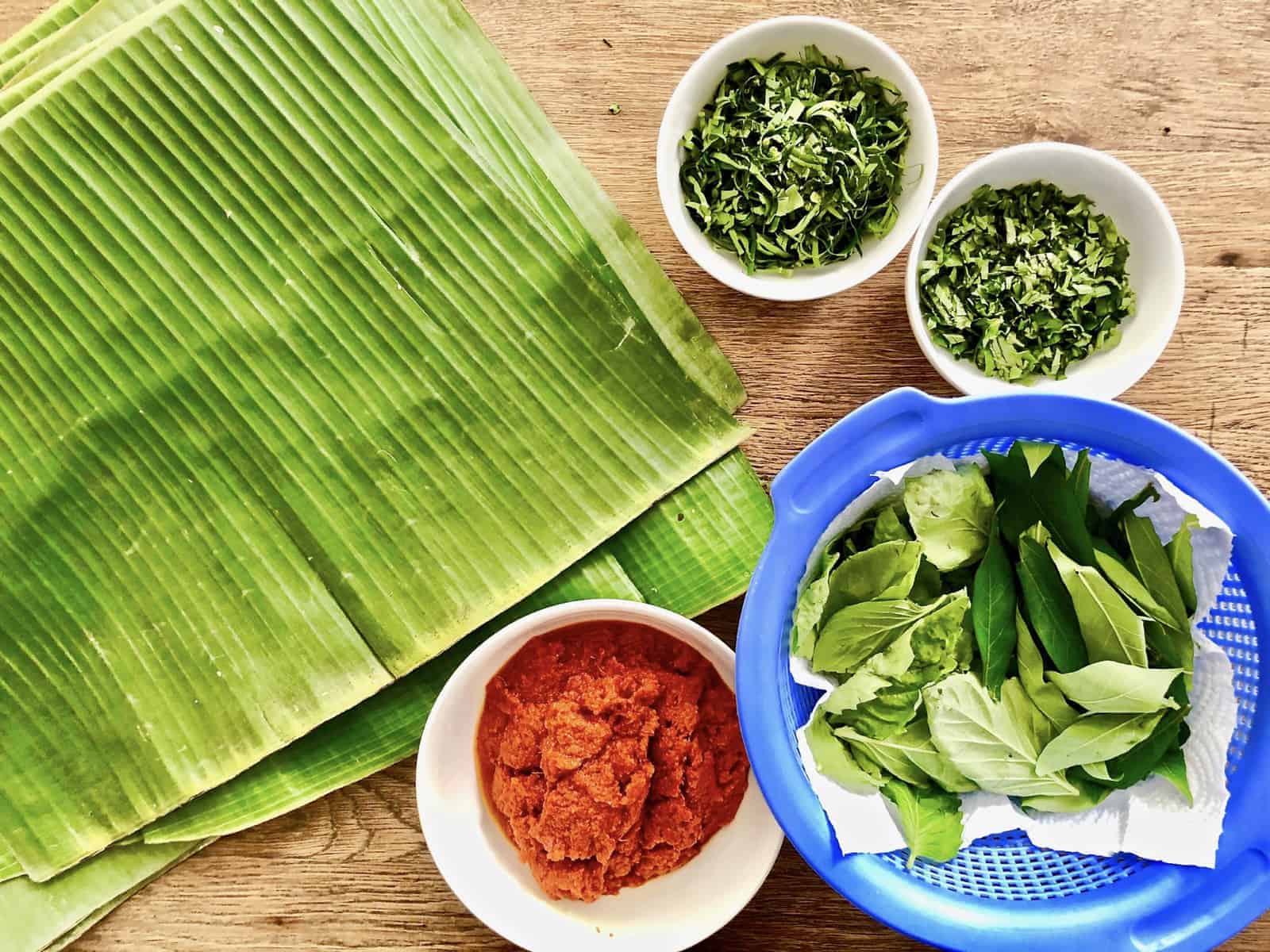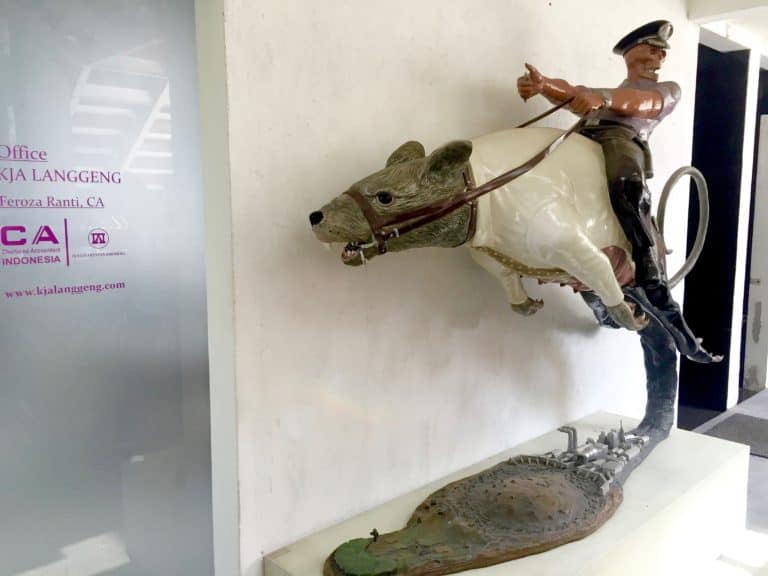One Saturday in early June, I carried a kitchen knife, carefully wrapped in newsprint, in my bag for most of the day while running errands in various parts of Singapore. Why? Because I had volunteered to be a member of visual/performance artist ila‘s kitchen crew for Makin’ Makan, a participatory art experience that she was presenting at A Weekend Affair with fellow artist Kin Chui. Sadly, me and my kitchen knife never made it there as my various appointments took longer than anticipated.

Nonetheless, dear reader, I managed to prevail upon ila to share the recipe for the dish that she and the participants made that afternoon, Ikan Pais. Never heard of Ikan Pais? Here are the first two lines from a Bengkulu-nese traditional song about the dish (the full lyrics can be found here):
Ikan pais, lemak rasanya
Makan kek nasi putih paneh-paneh
Translated, it reads, “Ikan Pais, it tastes delicious; Eaten with hot white rice.”
ila grew up eating this dish, which her grandmother used to make. Although she doesn’t have her grandmother’s exact recipe, she managed to recreate the dish from her memories of watching and helping her grandmother make it and also of how it tasted. Here are the ingredients:

Ulam refers to a mixture of fresh herbs and vegetables that are usually finely sliced or julienned and eaten raw as part of a salad or in traditional Malay dishes like nasi ulam and nasi kerabu. While some of the ingredients for the ulam in ila’s recipe can be found at other local wet markets, your best bet to find them all in once place is to go to Geylang Serai market.

You can find banana leaves at Geylang Serai too, or at Tekka Market, where you can also get freshly grated coconut for coconut milk, if you are a purist and don’t want to resort to the ones that come in a packet, like the popular brand Kara.

ila recommends using mackerel fillets to make Ikan Pais, but when I was at Tekka Market, the seafood stall had such enticing-looking stingray (a family favourite) that I decided to make a personal substitution (with apologies to ila and Ikan Pais traditionalists!). You can get the fishmonger to chop it into smaller segments for you. Wash the segments and the soak them in some salt and assam water – I soaked them for about an hour as ila didn’t specify the length of time.

To make the rempah, first de-seed the dried chilli, cut them into smaller pieces and soak them in hot water. Roast the belachan. Blend the dried chilli and belacan with the other rempah ingredients.
Prepare the ulam by removing the leaves from the stalks. Set aside the pucuk ubi (tapioca leaves) and the Thai basil leaves. Roll the laksa, turmeric and mengkudu leaves and cut them thinly, like bunga rampai (the potpourri that you often see at Malay weddings).
Wash the banana leaves and heat them gently over an open flame to soften them (there are videos on YouTube that show you how to do this, if you’ve never done this before).
Fry the blended rempah in oil until it is fragrant, add some kerisik (toasted grated coconut), coconut milk, assam juice, curry powder, salt and brown sugar, to taste (sorry, no precise measurements here, just agak-agaklah!).

Finally, the fun part – assembling the Ikan Pais! Put some pucuk ubi (tapioca leaves) and Thai basil leaves on a banana leaf, then add some rempah paste, a piece of fish and sprinkle some ulam on top of it. Fold the banana leaf and its contents into a packet, securing it with toothpicks. Repeat. Steam the banana leaf packets for about 40 minutes and voila, ila’s Ikan Pais.


ila explained that she and fellow artist, Kin Chui, wanted to use the gesture of the communal preparation and consumption of food to interrogate A Weekend Affair‘s overarching theme – issues surrounding colonialism and post-colonialism. They assert that, in pre-colonial times, fictive kinships – relationships that are not based on ties of blood or marriage – were prevalent. Fictive kinships are based on other forms of interaction or shared connections, including the sharing of food – the idea that those who eat and drink together are, by this very act, tied to one another. Makin’ Makan explores the idea of food as social glue and as a form of transmission of culture and knowledge.
Rasonyo oii lemak nian
Badan keringek rintik-rintik
Nasi sepiring sudah habis, raso ndak tambuh
“The taste is wow very delicious; Our bodies will sweat like the rain; A plate of rice has been finished, we feel like asking for more.”
___________________________________________
Want to read more about ila? Check out our previous article, Both Sides Now, where we spoke to her and host, Xiou Ann, about the art walk they created for Oh! Open House’s PASSPORT earlier this year.














